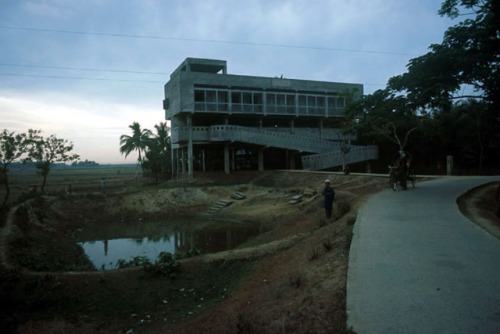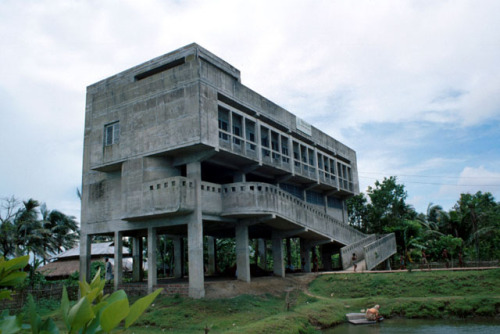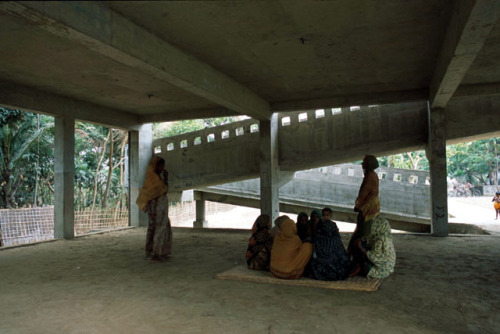Cyclones have inflicted a magnitude of suffering upon the nation of Bangladesh so profound that it m
Cyclones have inflicted a magnitude of suffering upon the nation of Bangladesh so profound that it makes my heart ache, and the hundreds of thousands that perished should never be forgotten. The Cyclone Shelter program enacted by the NGO “PRISM” (Projects in Agriculture, Rural Industry, Science and Medicine) sought to devise a solution for vulnerable areas of the country with traditional or informal housing unsuitable to ride out the violent storms. The above photographs are of one of several cyclone shelters in 1994 in the Chakaria, Maheshkhali and Kutubdia subdistricts of Cox’s Bazaar District. Below is the project description from the Aga Khan Award for Architecture, the source of the photographs and a prestigious award bestowed upon this program. “Three Community Development Centres and Cyclone Shelters (hereafter called Cyclone Shelters) were commissioned by PRISM (Projects in Agriculture, Rural Industry, Science and Medicine - an NGO with a Bangladesh office). The three structures are located in the upazilas/thanas (sub-districts) of Chakaria, Maheshkhali and Kutubdia respectively, within the Cox’s Bazar district of Bangladesh. The district is almost completely flat and only a few feet above sea level. The entire western coast and the islands are open to the Bay of Bengal and are vulnerable to cyclones and tidal waves. The population, which is concentrated mainly in villages, comprises farmers, farm workers, fishermen and salt-extraction labourers. They live in homesteads, which tend to be blown or washed away during storms. The shelters, therefore, serve as sanctuaries for the local communities and their livestock when cyclones and tidal waves occur. At other times the Cyclone Shelters are used as PRISM’s area office, as the local dispensary, and as a place where groups involved in various development programme activities (such as income generation and informal education) can hold meetings. The shaded space on the ground floor is generally used for spontaneous gatherings and other combined endeavours. The local communities view these majestic structures in their villages with a sense of pride.The Cyclone Shelters were planned to accommodate about 1,500 people and numbers of valuable livestock during cyclones occurring within a 1.5 kilometre radius. For regular activities each centre was planned to serve as a health clinic with a medicine dispensing area; as a seed/grain store; as a focus for education, training and community information; and as a communication centre and office for PRISM. The requirements included water and sanitation facilities within the main structure. Both the upper floors have toilets. In evolving the design brief special consideration was given to the use of the shelter in normal times; to disaster preparedness; to capacity; to livestock protection; and to maintenance and construction details.” -- source link
#bangladesh#brutalism



